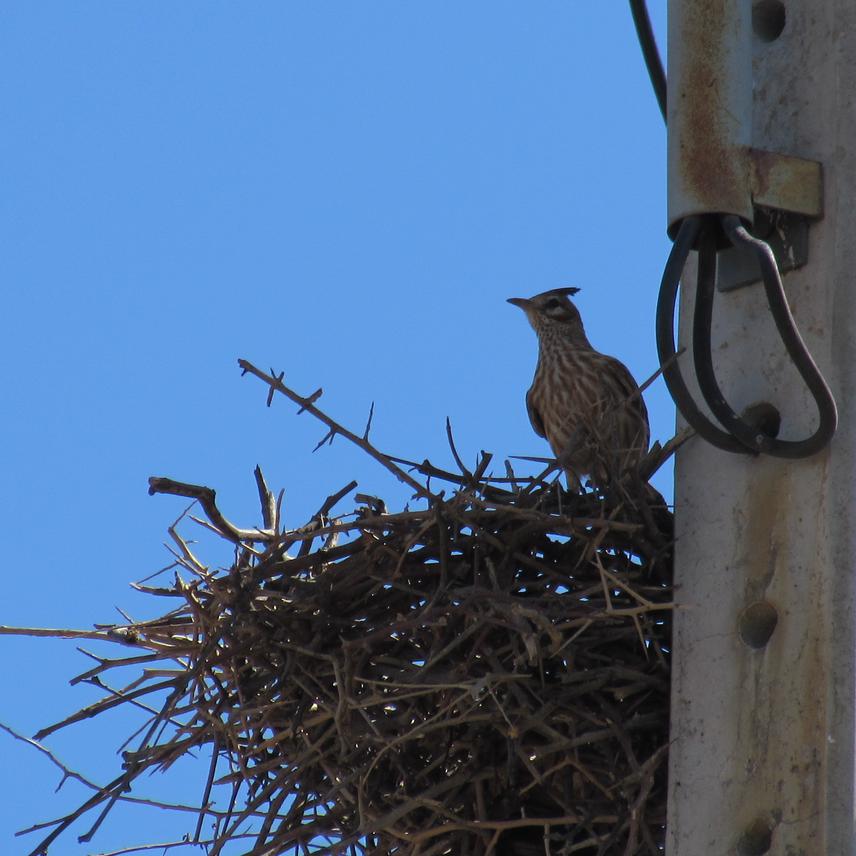Social media blog featuring the project.
Romina Cardozo
This project aims to carry out unpublished field studies, using acoustic records, to evaluate impacts on bird communities and endemic bird’s occupation in different landscape configuration in the Paraguayan Chaco. Specific objectives are: 1) To evaluate how different aspects of habitat fragmentation and landscape characteristics influence the species composition and richness; 2) To compare bird communities in fragments of different ages and levels of isolation in the landscape.

Coryphistera alaudina use thorns sticks for the nest. © Romina
The Chaco is a dry forest formation in South America, it is considered a global hotspot of land cover change but remains understudied. Land use change promotes habitat loss, fragmentation and loss of connectivity in the Chaco, influencing bird’s communities’ responds. Studies indicate an important influence of land use and fragments size on bird’s community and a prevision indicate that more than half of Chaco bird species may become extinct in 10 to 25 years if conservation actions are not implemented. Hence there is an urgent need for fieldworks in the region, to know bird’s communities and endemics bird’s status.
Our target species are the bird’s communities and endemic birds of the region. We will use techniques of acoustic recording in two regions with different landscape configuration: 1. Central Chaco, which represent the fragmented and least connected site as a consequence of historical development of the region; and 2. North of Paraguayan Chaco, near to large Protected Areas, with least anthropic interference. Birds presence will be based on recordings from automatic recording units (ARU) deployed on the sample sites. Recordings from ARUs will be analyzed both manually and automatically. The impacts on the bird communities will be analyzed considering the landscape configuration and temporal development of the region, which is related to length of time that a forest patch has been isolated. We expect that regions with low level of human pressure and less fragmented will hold more species and will have structured community in comparison with those regions more fragmented.
This work is going to achieve local and regional assessment of land cover change impacts on bird’s communities in different landscape configuration and will provide valuable data of endemic bird’s distribution in the current landscape. Results will promote the zoning and planning of the region, encouraging conservation and sustainable development. Also, will contribute and applied for effective conservation strategies and to policy-relevant knowledge.